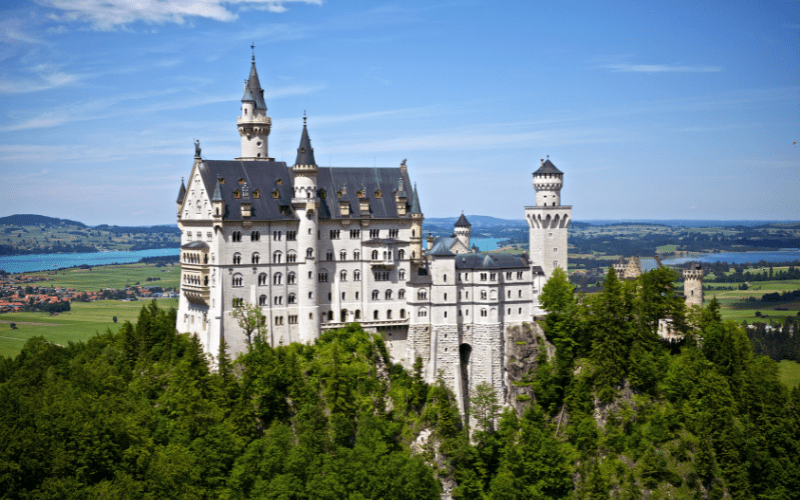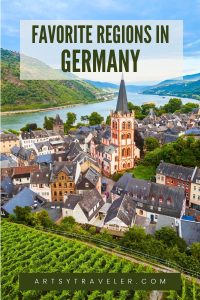Favorite Regions in Germany for the Artsy Traveler
Artsy Traveler contains affiliate links for products and services I personally use and can happily recommend. As an Amazon Associate, I earn from qualifying purchases. Please read the Disclosure for more information. If you make a purchase through these links, at no additional cost to you, Artsy Traveler earns a small commission. Thank you!
Germany has much to offer the Artsy Traveler–from the museums of bustling Berlin to the pastoral landscapes of the Rhine Valley and a lot in between.
In this post, I review some of my favorite regions in Germany and include recommendations for what to see and where to stay.
The map below shows the destinations I’ve visited and recommend for artsy traveling.

Cologne and the Rhine Valley
Add Cologne and a short cruise along the Rhine to your Germany trip. Here’s a suggested itinerary for a week in this magical area.
Days 1 and 2: Cologne
Day 3: Bonn
Days 4 and 5: St. Goar to home base, then take a cruise down the Rhine to Bacharach (about an hour) and the local train back to St. Goar
Days 6 and 7: Stay in Cochem and explore the Mosel Valley for a day or visit Trier with its excellent Roman ruins.
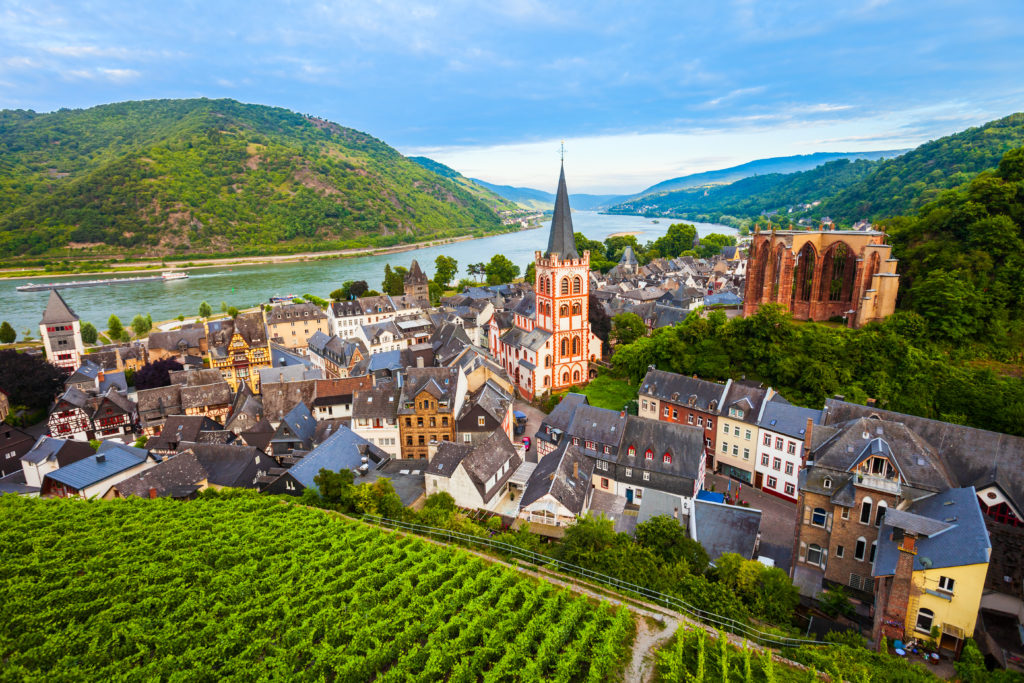
See more details about this itinerary in Exploring Cologne and the Rhine Valley.
Berlin
Gregg and I spent a week in Berlin when he had an exhibition there and so had lots of time to explore this remarkable city. The weight of history is heavy in Berlin but at the same time, the city is energetic and forward-looking.
From an artsy perspective, Berlin is up there with London and Paris as one of Europe’s premier cultural capitals.
Read my suggestions for enjoying up to a week in Booming Berlin: Your Artsy Guide.
Leipzig
This city retains some of its East German past—dreary apartment blocks, cheap tickets to music concerts, and Ampelmänn (Ampelmännchen in German).
When you travel in Germany, you know when you’re in a city or region that was once part of East Germany by the crosswalk signals for pedestrians. We first spotted the red Stop and green Go Ampelmännchen in Leipzig and again in Berlin when we were in neighborhoods that used to be behind the Berlin Wall.
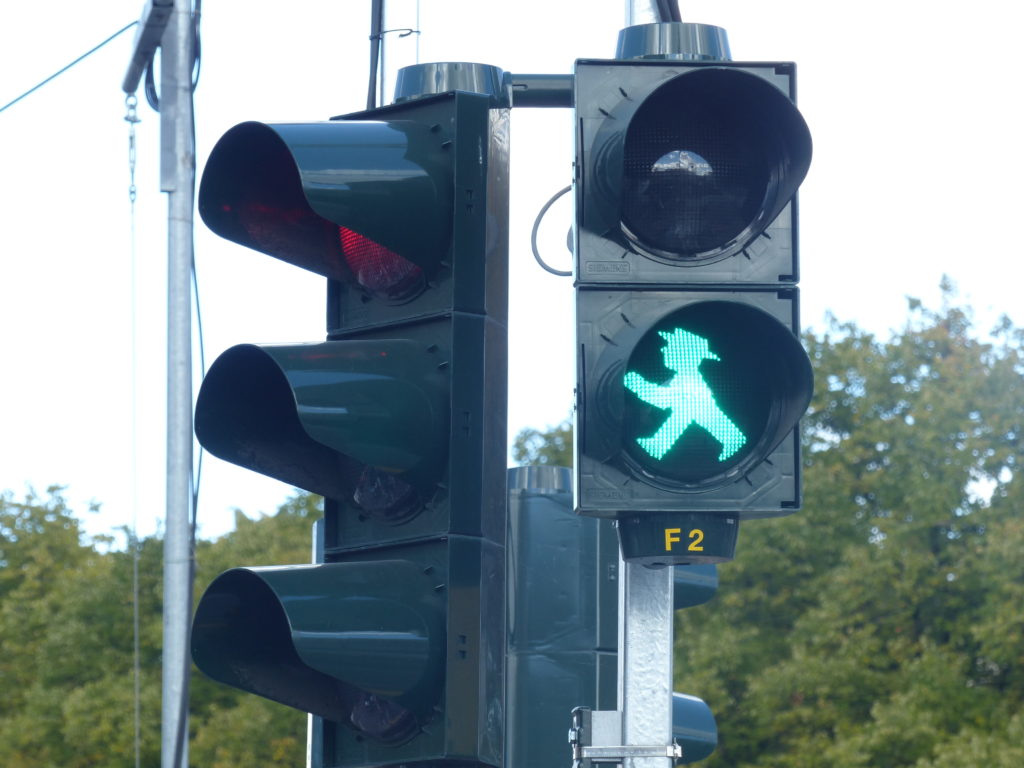
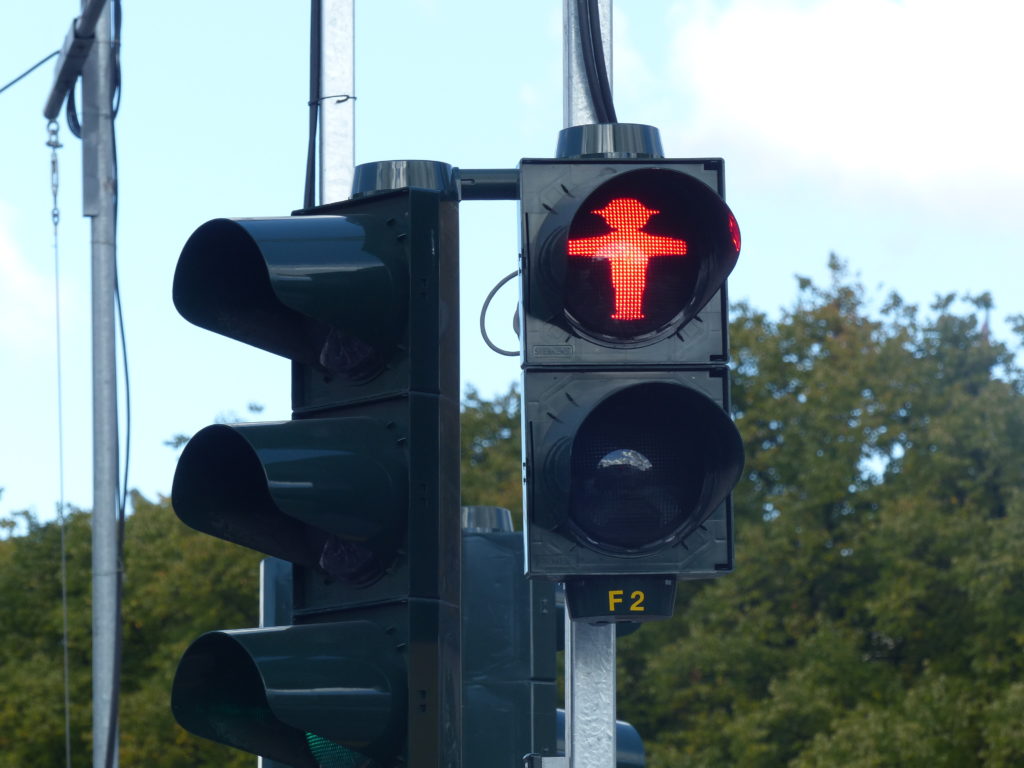
I became rather fond of Ampelmänn and even bought a plastic walking man for my keychain. For a dizzying variety of Ampelmännchen schlock, visit the Ampelmänn shops in Berlin (see more in Booming Berlin: Your Artsy Guide).
Enjoying this post? Subscribe to Artsy Traveler to Receive Valuable Travel Tips and Your FREE Guide: 25 Must-Do Artsy Traveler Experiences in Europe for 2025
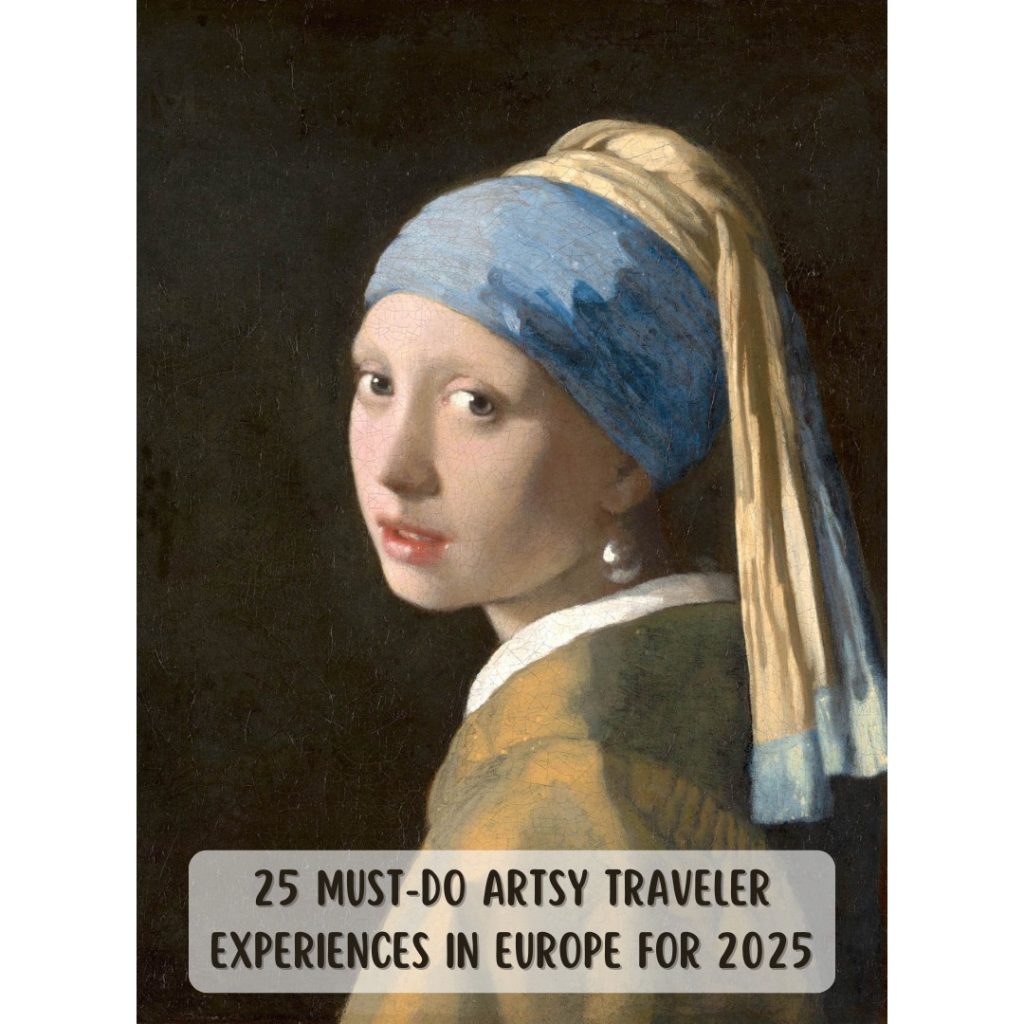
Bach in Leipzig
The big draw in Leipzig is Johann Sebastian Bach. I’d always wanted to visit Leipzig because of its connection to Bach and finally got my wish in 2015. The Bach Museum has to be one of the world’s finest music museums.
Leipzig has a marvelous pedestrian area teeming with restaurants. Different varieties of beer from various regions all over Europe are featured. When I asked for a beer that was local to Leipzig in a restaurant that only served beer from Munich, I got a very frosty reception from the server. Apparently, it’s a faux pas to order Leipzig beer in a Bavarian-themed restaurant. Who knew?
The people of Leipzig are proud of their contribution to the dissolution of East Germany. The pivotal day of the Peaceful Revolution was October 9, 1989 when 70,000 protestors marched into the center of Leipzig crying “We are the People!” and “No violence”.
The young man at the hotel desk, who probably wasn’t even alive in 1989, was eager to tell us all about it when we checked in.
Munich
Like Berlin, Munich is a must-see city in Germany. Alas, I haven’t been back to Munich since our family trip in the 1990s which means I’m due for another visit.

I remember drinking excellent beer in the Marienplatz—the main square—while waiting for the famous Rathaus-Glockenspiel clock to chime the hour. Every day at 11 am and noon (and 5 pm in the summer), the clock chimes and carved medieval figures re-enact stories from the 16th century.
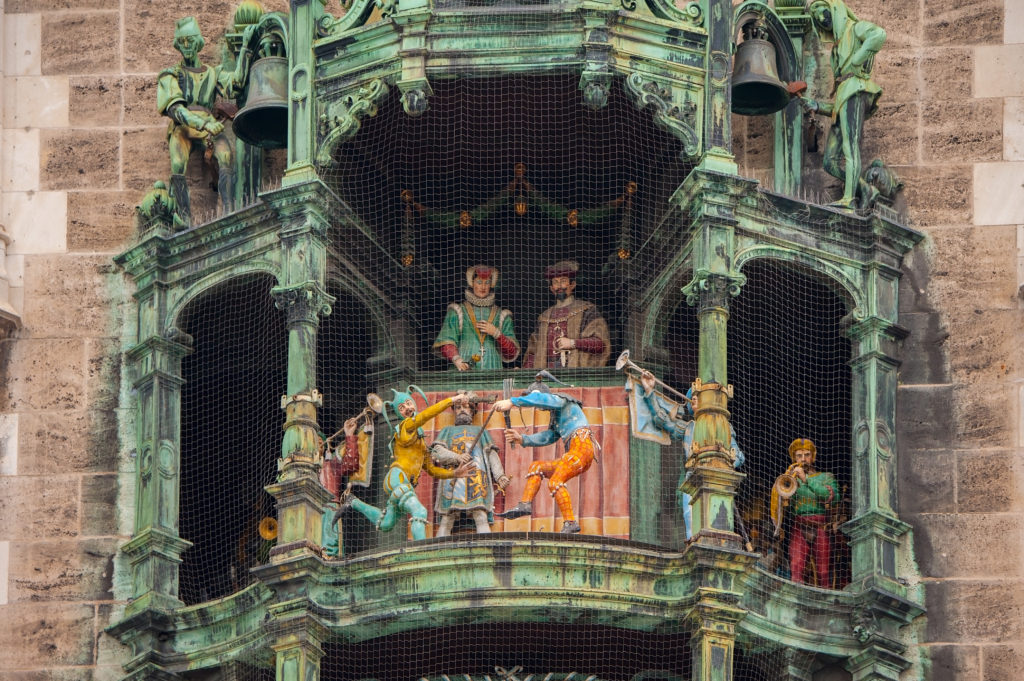
Don’t miss the massive Deutsches Museum that showcases over 100,000 objects from the fields of science and technology and is one of the most important museums of science and technology in the world. Exhibits range from atomic physics to the Altamira cave to a magnified model of a human cell as well as other displays from the Stone Age to the present.
Munich is also home to world-class art museums including the Alte Pinakothek and the Pinakothek der Moderne. The Neue Pinakothek is closed until 2025, with some of its masterpieces now being exhibited at the Alte Pinakothek.
Nuremberg
This city in south central Germany has a lot to recommend it. We stopped there on our way north from Italy en route to Leipzig and Berlin.
You’ll find an attractive old town with plenty of half-timbered buildings, pedestrian-only streets, the Nuremberg Castle which miraculously survived allied bombs, and my favorite, the Albrecht Dürer House (see Artsy Favorites in Germany).
Stroll the medieval streets and enjoy a dinner of German sausage and beer. Here are two views of Nuremberg.
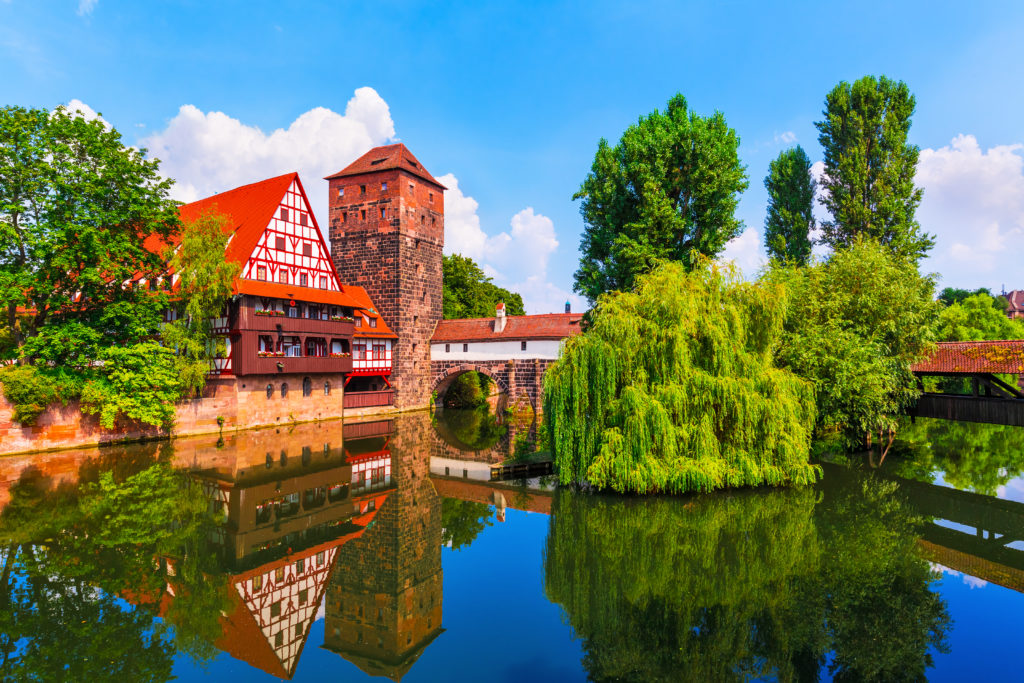
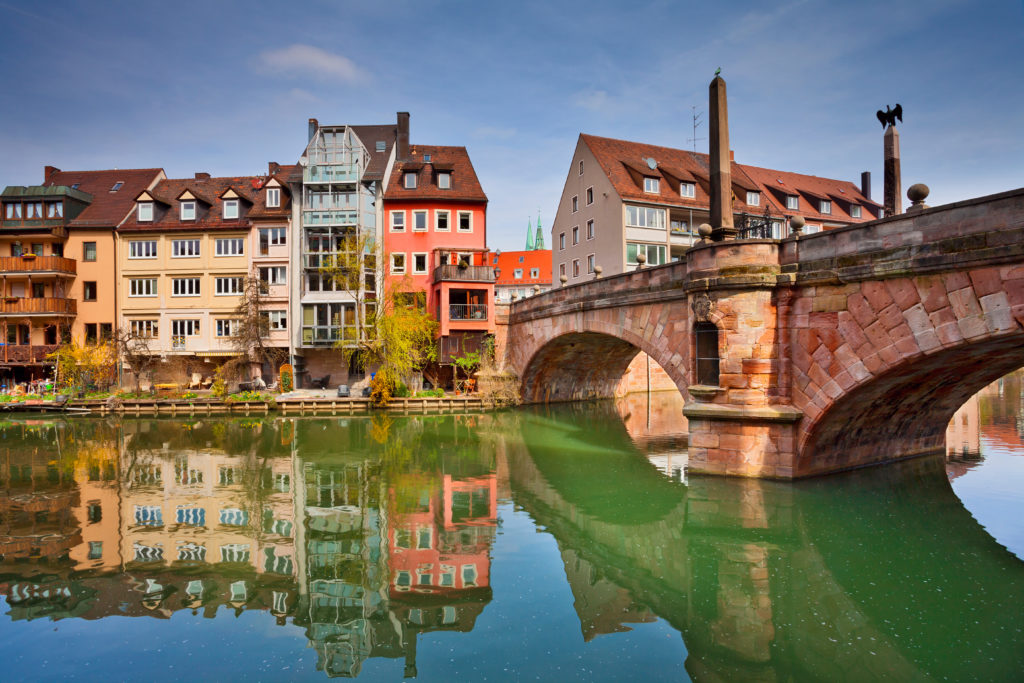
Trier
We spent a night in Trier and really enjoyed its laid back atmosphere, attractive town square, and its Roman ruins. It was a convenient night’s stopover on our way from Amsterdam to Italy.
For us, the attraction of Trier was its Roman ruins. As you’ve probably already guessed if you’ve spent any time on this website, Gregg and I are suckers for a good Roman ruin and usually go out of our way to find them.
The Romans lived in Trier for over 500 years, and in the 4th century the city was the favored residence of Roman emperors, including Emperor Constantine. In Trier, you’ll find lots of Roman ruins including a complex of Roman baths, a large amphitheater and the mammoth Porta Nigra (Black Gate).
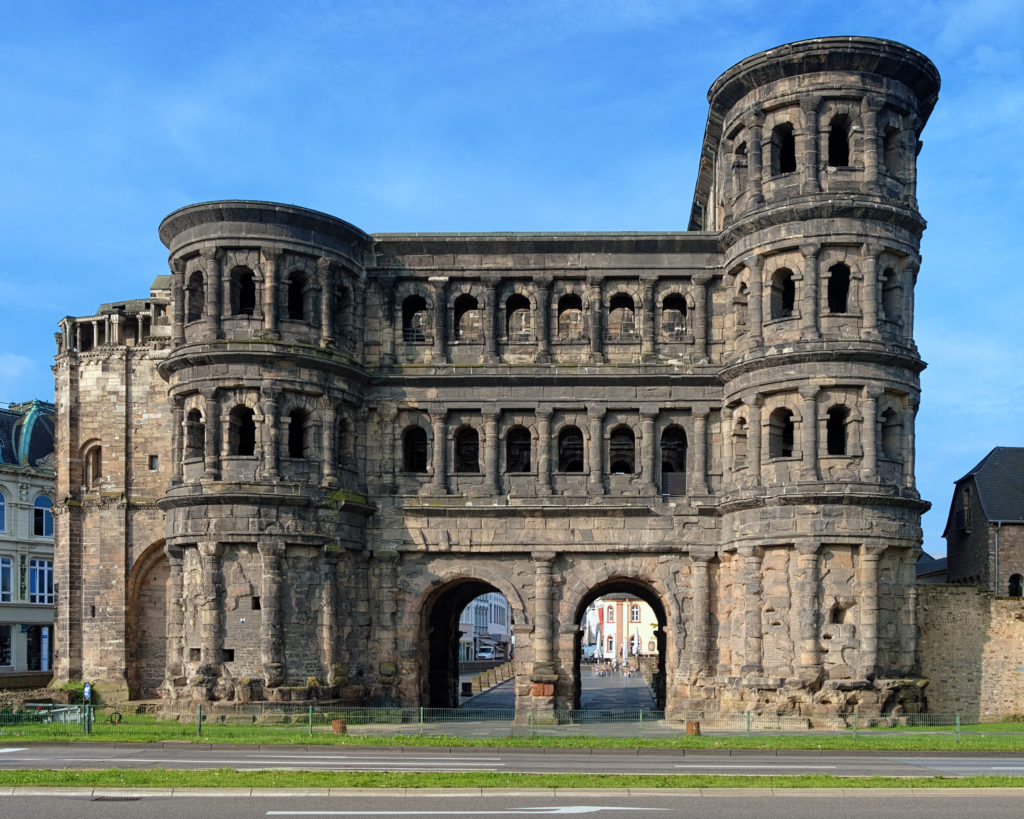
When you’re done with ruins, visit the Rheinisches Landesmuseum, a large archeological museum with an excellent collection of Roman artifacts.
Once you’ve had your fill of Roman ruins, spend the evening strolling Trier’s pedestrian main street lined with half-timbered houses, admire the market cross that dates from 958 in the market square, and enjoy a dinner accompanied by plenty of local wine.
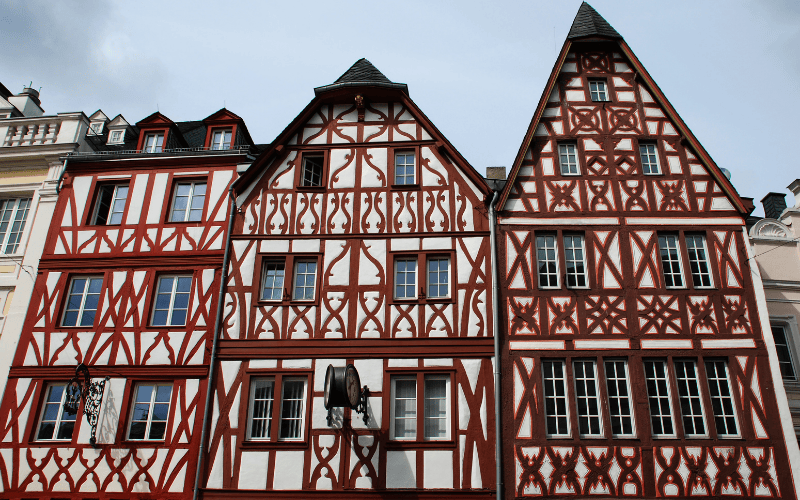
When we were in Trier in 2018, the town was gearing up to celebrate the 200th anniversary of the birth of Karl Marx. Strores were filled with Karl Marx rubber duckie, replete with a copy of Das Kapital clutched under one wing and a quill pen in the other.
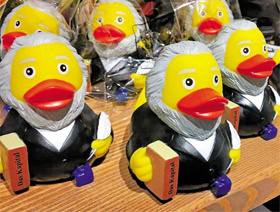
I didn’t buy one and am now kicking myself since I doubt I’ll be around for the 300th anniversary.
More Posts About Germany
Here are some more posts about artsy traveling in Germany:
- Favorite Regions in Germany
- Booming Berlin: Best Bets for the Artsy Traveler
- Where to Stay in Germany: My Best Picks
Have you visited Germany? Share your suggestions in the Comments below.
